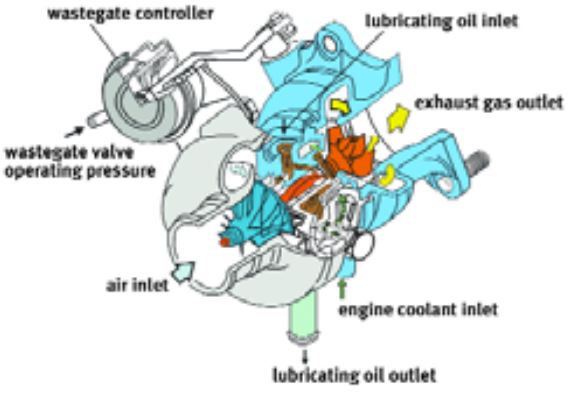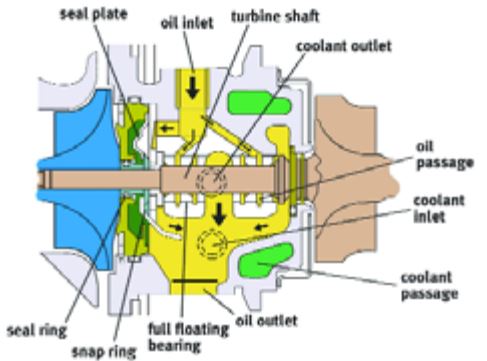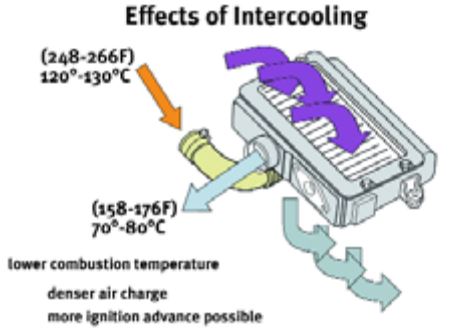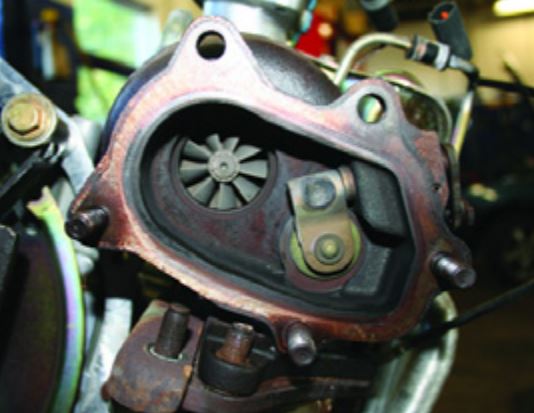Subaru Turbocharger Explained:
The Turbocharger Itself
The Subaru turbocharger consists of a double-chambered housing encasing a turbine fan on one side and a compressor fan on the other, both mounted on a shared axle. It is positioned in the exhaust manifold and is driven by the exhaust gases coming from the cylinders.
The gases enter the turbine chamber, forcing the turbine to rotate. The rotation drives the compressor, compressing intake air, which is sent to the engine intake.

The unit is water-cooled and lubricated by oil, both of which circulate through the housing. The lubrication oil is on a circuit from the engine oil pump. The very high speed of the turbine and compressor shaft – 20,000 rpm at idle and up to 200,000 at full throttle – requires a constant supply of lubricant to the full-floating bearings in order to avoid damage or failure. The oil also helps cool the shaft.

Subaru Turbocharger Explained:
The intercooler lowers the temperature of the air that has been heated in the process of being compressed by the turbocharger. Hot air expands and therefore lowers the efficiency of the turbocharging effect (increased power).
Cooling the air makes it denser, so more can be packed into the cylinder to achieve the desired effect. Also, hot air increases the tendency for detonation to occur. The intercooler is similar to a coolant radiator in that it dissipates the heat in the pressurized air into the atmosphere.

Wastegate
A wastegate is a form of bypass valve. It diverts a portion of the exhaust gases around the turbine, rather than through it. This limits the boost pressure the compressor supplies to the cylinders.

